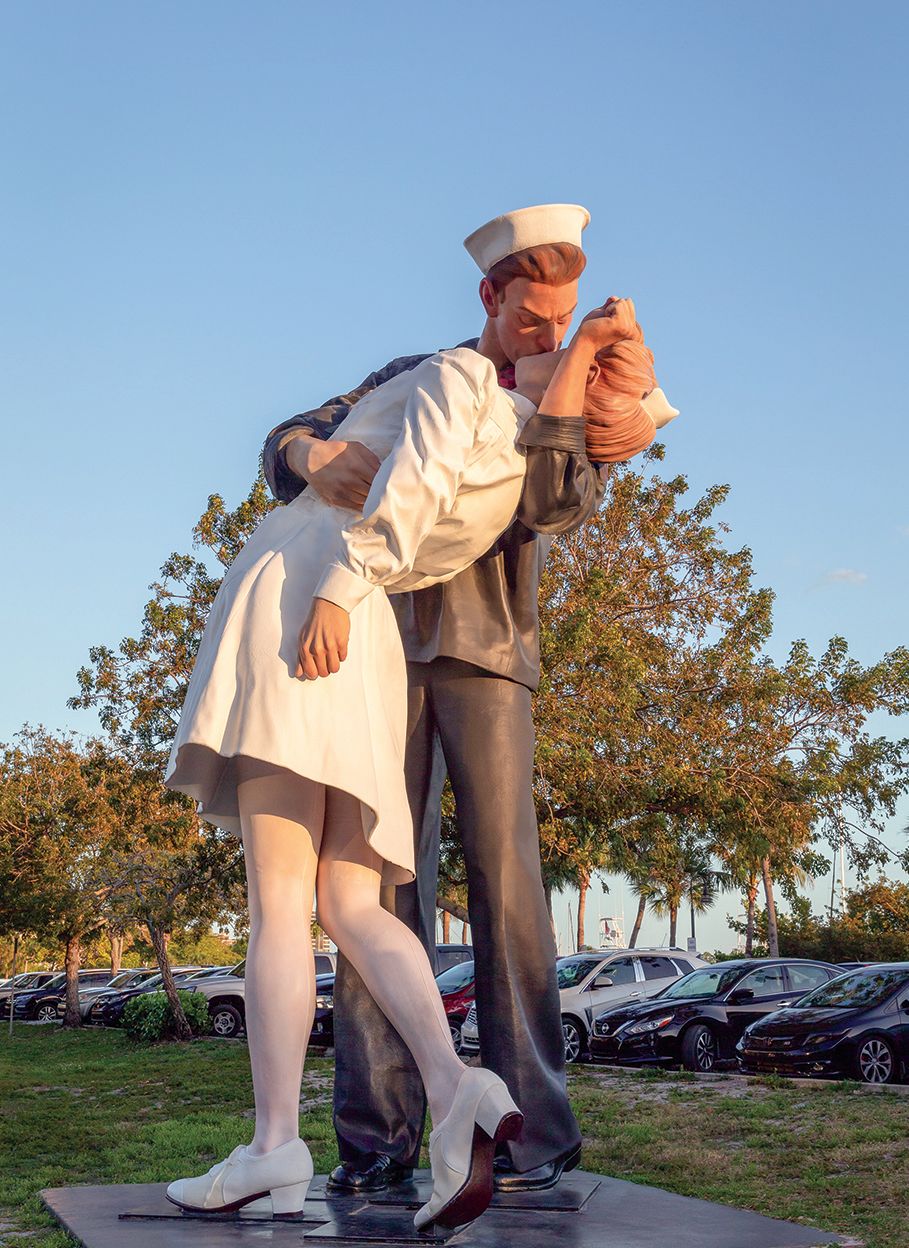Sarasota's Public Art Program Helps Form Our Community Identity

Unconditional Surrender
Image: Shutterstock
The city of Sarasota’s public art program was established in 1989 when downtown was considered blighted and in need of serious beautification. Today, 86 pieces comprise the public art collection, from sculptures to fountains to wall murals, varying in price, size and origin. Proponents say public art has the power to deepen people’s aesthetic and emotional connections to the area and is a vital part of Sarasota’s identity as a cultural mecca.
Ka-ching
Taxpayer dollars don’t fund public art, as many mistakenly believe. Rather, the money comes from the Percent for Art Program, which requires developers to set aside half a percent of the cost of their building project for either the public art fund or for a piece of art on their building site.
The Pick
When the city seeks to buy public art, the planning department puts out a call to artists to submit their proposals. At quarterly public meetings, the Sarasota Public Art Committee reviews hundreds of those proposals to choose the finalists, whose work should embody some facet of Sarasota culture. The City Commission gives the final approval.
Who’s the Owner?
Public artworks are split into three categories: art that is owned and maintained by the city, art that is bought by a developer and displayed as part of his or her building, and art on loan by the artist (technically free, but the Public Art Fund provides the pedestal or setup).
In the Beginning
Italian artist Gennaro Chiurazzi’s sculptures of a male discus thrower and a Borghese swordsman, displayed on St. Armands Circle, were donated by John Ringling to Sarasota’s public art collection in 1925.
Priciest Piece
It took one year to raise $550,000 for sculptor John Henry’s Complexus, a highlight of the 2011-2012 Season of Sculpture. Nearby
condo residents wanting to beautify their views spearheaded the fund raising. Bright red, 70 feet tall and pointing skyward, the steel sculpture at the intersection of U.S. 41 and Gulfstream Avenue has become a symbol of the downtown skyline.
Love It or Hate It
Seward Johnson’s Unconditional Surrender statue is either considered a cartoonish roadside distraction or a touching tribute to World War II. Regardless, it’s become an Instagram hotspot for kissing couples and is being donated to the city in June 2020. It seems the infamous statue will not elude its status as a Sarasota symbol after all.
Star Turn
And another Johnson statue may be on its way. Businessman Mark Famiglio is considering buying Johnson’s Forever Marilyn, a statue of Marilyn Monroe in her iconic The Seven Year Itch pose, for 332 Cocoanut, a 36-unit condo he’s developing at Cocoanut Avenue and Fourth Street that also will house the Sarasota Film Festival. “It’s cinema-centric,” he says. “I think it’s amazing.”
For the Future
The winning proposals for two $150,000 sculptures on U.S. 41 at the 10th and 14th Street roundabouts will be selected this summer and will be installed in about a year. Future projects include a possible Unity Monument at Bayfront Park, and the most significant wall mural thus far in the public art collection, to be painted on the Mark Sarasota condominium complex.
For an interactive online public art tour, go to sarasota.maps.arcgis.com and search Public Art Tour.



